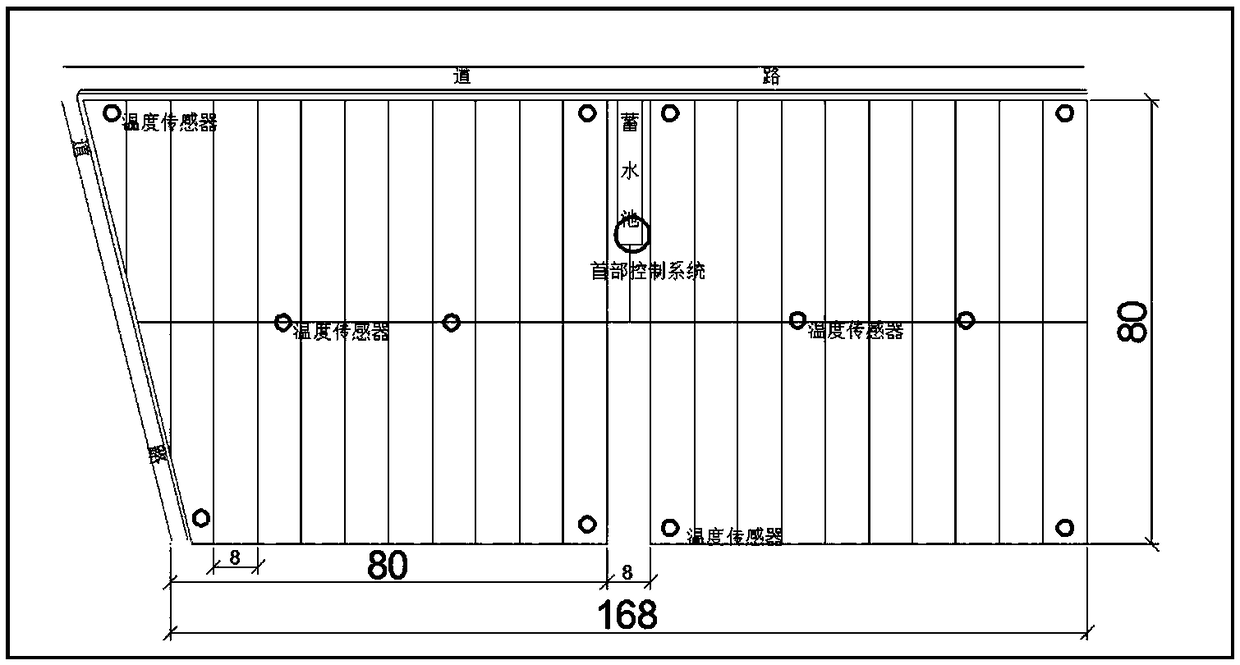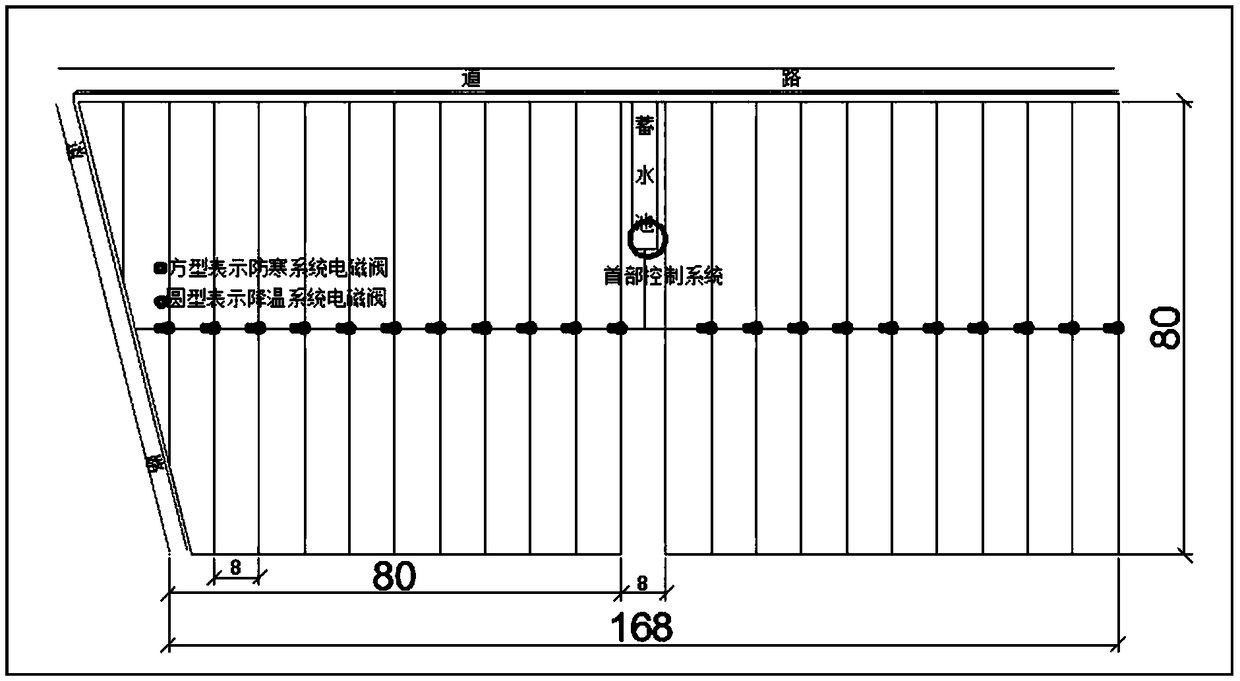Application of atomizing system to stress-resistant cultivation of loquats
A loquat and manufacturing system technology, applied in the application field of the mist system in the loquat stress-resistant cultivation, can solve the problems of loss of commerciality, dark brown fruit, reduction of production and income, etc., to reduce the loss of freezing damage, reduce the temperature of the park, and improve the quality of the park. The effect of temperature
- Summary
- Abstract
- Description
- Claims
- Application Information
AI Technical Summary
Problems solved by technology
Method used
Image
Examples
Embodiment 1
[0042] From January 23 to 25, 2016, during the period of severe low temperature below -6°C in Zhejiang loquat production area, when the field temperature was 0°C to 2°C every night, follow the procedure of mist spraying for 5 minutes and stop for 30 minutes. Start and stop spraying after 8:00 in the morning; when the field temperature is -3°C to 0°C, increase the time and frequency of misting, follow the procedure of misting for 10 minutes and stopping for 15 minutes to start misting, and cycle, after 8:00 in the morning Stop spraying; when the field temperature is lower than -3°C, follow the procedure of mist spraying for 20 minutes and stop for 10 minutes to start misting, repeat the cycle, and continue to apply mist until the end of the low temperature. -8, which belonged to the normal yield; in the same year, in the production areas where Miwu was not used in Zhejiang Province, less than 1 fruit per ear of "Ninghaibai" was set, and more than 90% of the flower ears had no fr...
Embodiment 2
[0044] From January 23 to 25, 2016, during the period of severe low temperature below -6°C in Zhejiang loquat production area, when the field temperature was 0°C to 2°C every night, follow the procedure of mist spraying for 5 minutes and stop for 30 minutes. Start and stop spraying after 8:00 in the morning; when the field temperature is -3°C to 0°C, increase the time and frequency of misting, follow the procedure of misting for 10 minutes and stopping for 15 minutes to start misting, and cycle, after 8:00 in the morning Stop spraying; when the field temperature is lower than -3°C, follow the procedure of mist spraying for 20 minutes and stop for 10 minutes to start misting, and repeat until the low temperature ends, and the "Ruantiaobaisha" loquats will set 2-5 fruits per ear, reaching 60% of the normal yield; in the same year, in the production areas where Miwu was not used in Zhejiang Province, "Ruantiaobaisha" had less than 1 fruit per ear, and more than 90% of the flower e...
Embodiment 3
[0046] In late May 2017, during the ripening period of loquat fruit, the temperature was higher than 30°C, and the temperature of the fruit surface reached 48°C after being irradiated by sunlight, and the fruit was severely sunburned by direct sunlight. There is Miwu Loquat Garden, when the temperature in the field is higher than 30°C, the mist is turned on, and the mist is turned on according to the procedure of misting for 5 minutes and stopping for 30 minutes, and so on, and the mist is stopped after 16:00 in the afternoon. The surface temperature of the fruit is always not higher than 38°C by misting, and the sunburn rate is below 5%. In contrast, in the unbagged loquat orchard, the fruit surface temperature reached 48°C, the highest field temperature was 39°C, and the sunburn rate was 30%.
[0047] It can be seen from the above examples that after the mist system is used, the average fruit setting rate of Baisha loquat per ear can reach 7-8 in normal years and 2-3 in extr...
PUM
 Login to View More
Login to View More Abstract
Description
Claims
Application Information
 Login to View More
Login to View More - R&D
- Intellectual Property
- Life Sciences
- Materials
- Tech Scout
- Unparalleled Data Quality
- Higher Quality Content
- 60% Fewer Hallucinations
Browse by: Latest US Patents, China's latest patents, Technical Efficacy Thesaurus, Application Domain, Technology Topic, Popular Technical Reports.
© 2025 PatSnap. All rights reserved.Legal|Privacy policy|Modern Slavery Act Transparency Statement|Sitemap|About US| Contact US: help@patsnap.com



